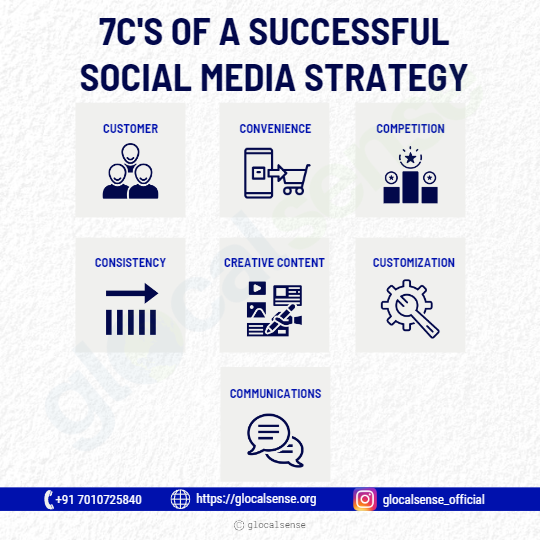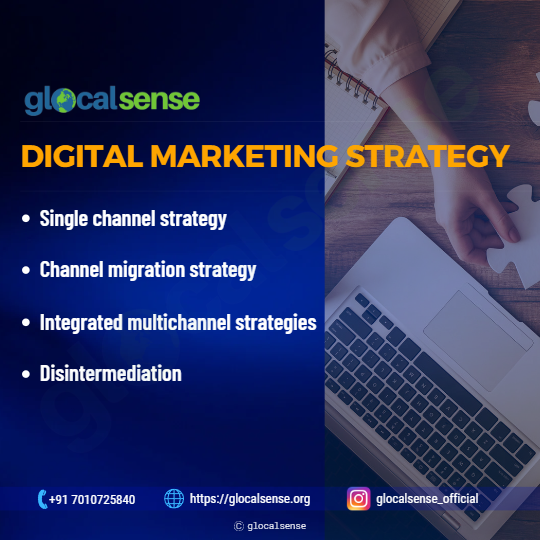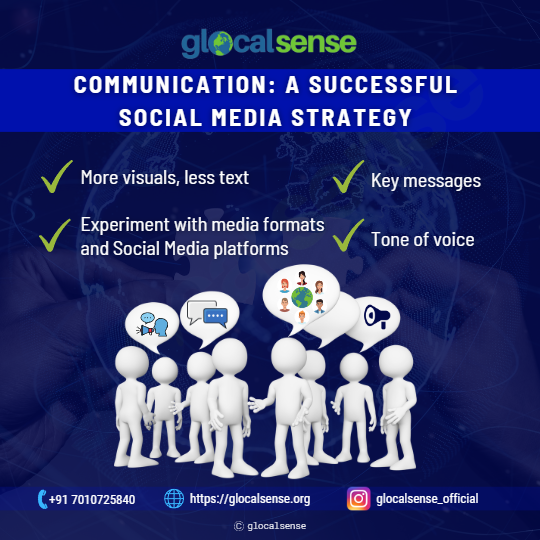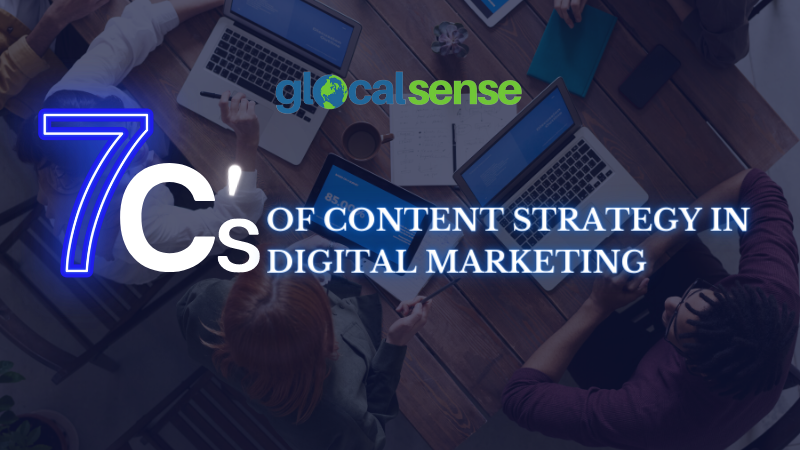In today’s online world, any brand’s backbone is its digital marketing. It serves as a conduit for customer and brand communication. In addition, a brand’s presence on numerous social networks is required for it to remain relevant in the market. However, the question of how to do so efficiently remains unanswered.
A marketing model is an excellent framework for focusing your planning efforts. It’s also a powerful tool that allows your company to create effective marketing plans that will stand the test of time. After using social media for a while, many people and companies realize they need a strategy. But, of course, the strategy is equivalent to placing the cart before the horse. So, you could think about your social media in terms of the seven Cs to assure success.
Where do you even start with digital marketing?
As the Internet is increasingly being used as a medium of sales by companies, the need for digital marketing experts has never been greater. It is also a fast-evolving industry. Now could be the best time to do it if you think about changing gear and entering digital marketing.
We’re all familiar with the 7Ps of traditional marketing. However, understanding the 7C’s of Online Digital Marketing is essential for understanding the challenges of Digital Marketing versus Traditional Marketing. Here, we’ll go over the 7C’s of Digital Marketing, including the tools you’ll need to do a digital audit, plan, and implement strategies.
The main aim is to establish a helpful framework that may help any marketer improve their business.
7 C’s of a Successful Social Media Strategy:
You can better implement, maintain and manage your social media presence by understanding the essential C’s of a social media strategy.

- Customer:
The customer must be right at the center of any marketing model in any marketing context. The Internet offers marketers substantial marketing opportunities, and this element needs to consider how profoundly the business knows customers.
Customer behavior is changing dramatically. In each stage of your sales process, you expect rapid, transparent communication these days.
New behaviors arise daily, and your job as a marketer is to recognize and adapt these behaviors and their technologies, strategies, and so on to support your business. However, it can be tough to ‘sell all to everyone,’ which is why you need to enhance your online marketing efforts.
New behavior means that your client, their needs, shopping behavior, supply requirements, and the online communities they belong to are essential for you. Therefore, you must be highly aware of everything involved with your customer in the online environment.
2. Convenience:
Due to their ability to shop from anywhere, power has shifted steadily from retailers to consumers in recent years. The advanced technology makes it easy for the consumers to shop on their mobiles and tablets while awaiting the start of meetings, on the train or bus, on and out of work, etc.
Elements of Convenience:
- Easy access, such as adaptive and responsive websites, to shopping on different products.
- Accessible reminiscence of all previous orders, saving prior information so that you can repeat some of the earlier orders if you are quick to make a purchase.
- A simple order confirmation with details on when it will arrive.
These elements are slightly different whether you’re dealing with B2B or B2C, but the basic idea is the same.
3. Competition:
In this developing environment, some changes occur virtually overnight. But technology provides competitors and new marketers the chance to witness tampering, and predicting the next step is not always or is even feasible.

As you are aware, there are no limits in technology, as products are available on any website at any time. Technology has also changed the path to market, and many more options are now available in terms of digital marketing strategy:
- Single Channel Strategy: This involves only using one marketing channel.
- Channel Migration Strategy: This is when you operate on one channel but convince clients to switch to another.
- Integrated Multichannel Strategies: This is where you customize multi-modal channels to meet the needs of diverse types of clients.
- Disintermediation: This is where you cut out the middleman or eliminate intermediaries.
4. Communications:
The new means of inbound marketing, such as organic search engine optimization and social media, are arguably the most significant change digital media brings. We’ve seen a substantial transformation of communication into new forms of inbound marketing here. Instead of the traditional one-way form of communication, we now observe a two-way and multiparty discourse on social media.

This results in a considerable loss of control for most businesses, as other individuals online influence their message.
The nature of copywriting has changed, and there is now a demand for sharp, to-the-point postings rather than pages of brochures covered in elegant text. Therefore, a content audit is the most effective technique to assess your online communications.
Here are the following method of communication to emphasize the content:
- More visuals, less text
- Experiment with media formats and social media platforms
- Key messages
- Tone of voice
You can also use this to analyse your competitors’ communications.
5. Consistency
Consistency is an easy-to-understand aspect. It’s all about being able to provide the same level of service regardless of the channel. Therefore, you must maintain consistency across all channels, from your blog to email to social media and beyond.
Whether you provide customer care via social media, email, phone, or online chat, you must establish and maintain the same standards and levels of service across all channels.
6. Creative Content
Many bloggers and internet marketers neglect to update their websites regularly.
However, with Google’s algorithms evolving, it’s more important than ever to ensure that your content is updated on a regular basis if you want to be visible online.
Customers nowadays will seek additional informational resources on other platforms such as social media, YouTube, and so on. Still, your company’s website should always be the primary source of information.
Make sure you take care of that and turn your attention to the various review sites, review plug-ins, and other platforms in aspect to collect input from customers who purchased your products.
Content is a great approach to convert hesitant and increase client loyalty, as long as you’re willing and able to handle any concerns that emerge quickly and professionally. Formats including videos, infographics, and downloadable instructions are examples of other sorts of creative material you might use.
7. Customization
These days, many websites offer customized web experiences. Amazon is the most well-known example of this.
It greets you when you return to the website, provides recommendations based on what’s new, suggests a variety of additional goods you would like to buy that are inspired by (according to them) your buying habits, and so on.
Greater personalization has been made possible by the introduction of easier-to-use technology. As marketers, we have a wealth of data at our disposal to aid us in this endeavour.
Bonus ‘C’: Coordination
Consider selling a product to a consumer and then sending them a request to examine it online a few days later.
Only to discover that the buyer has yet to get the merchandise! There’s no better way to make your customer think you’re inept than that! In your company, coordination is crucial. But I believe a better term would be integration – ensuring that the customer experience is well-coordinated through multichannel service from the initial click to the final delivery and even beyond. It’s critical to ensure that everything is integrated and coordinated, whether you have a staff or work on your blog alone.
Conclusion:
Google Analytics is a free yet powerful platform that will help you improve as a marketer by monitoring your efforts, experimenting with new ideas, and increasing interactions and conversions.
As a result, set your goals and begin to enhance your marketing methods so that you can witness explosive results.
